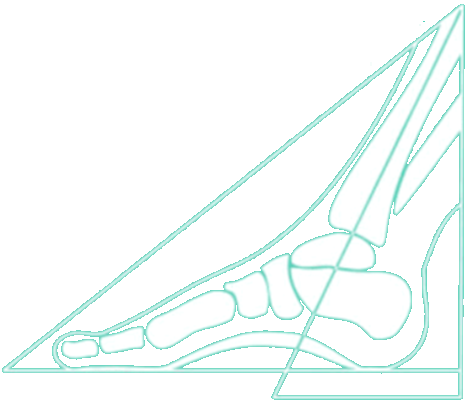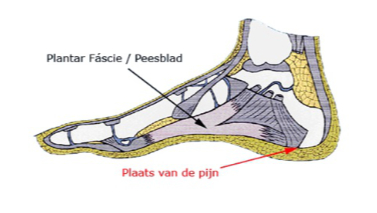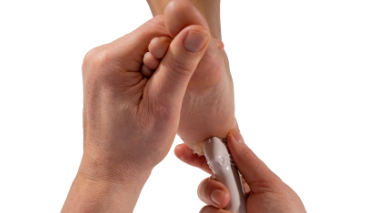
The calcaneus (heel bone) is a large and sturdy bone that has an important function in standing (being able to bear body weight) and in rolling the foot during walking. The heel bone has a direct joint contact with the talus (ankle bone) which is an important part of the ankle joint. Damage to the joint between the heel bone and the talus leads to movement restrictions of the foot when walking. The heel bone also has a joint surface with the metatarsals and it forms an attachment point for a number of ankle ligaments and tendons in the foot. Complaints/injuries to the heel are most common in two places, namely pain at the back of the heel and pain at the bottom of the heel.
A heel spur is an outgrowth of bone tissue on the heel bone in the form of a curved thorn. A heel spur is often located where the tendon has its attachment to the heel bone. This can be demonstrated with X-rays. If no abnormalities are found on the X-ray, there is more likely to be irritation or inflammation of the tendon. The pain point with a heel spur is often easy to identify with one finger.
This tendon plate (fascia) runs towards the toes and fans out to the heads of the metatarsals. It supports the longitudinal arch of the foot at the sole (plantar) and, as a tense band, increases the push-off force of the foot during running and jumping. The tendon plate is not very elastic, because otherwise the foot would sag significantly when standing and the rolling would be disturbed. Tendon plate inflammation (plantar fasciitis) is usually caused by excessive traction at the attachment of the tendon plate under the foot.
It is sometimes difficult to distinguish these complaints from each other, because they have almost the same symptoms and manifest themselves in the same place. Usually there is a sharp pain when standing and a burning or aching and stiff feeling at the heel and through the foot. Morning stiffness and stiffness after rest are characteristic, as with many tendon inflammations, as well as the starting pain during the first meters of walking.
Research should show whether the heel bone is crooked or incorrectly loaded, because this affects the heel bone itself and the surrounding tendons but also the rest of the foot. A good stable shoe with a corrective therapeutic insole is a first requirement. In addition, for the real heel spur it is important to relieve the location of the bone formation by making a recess in the insole at the level of the pain point. It can take 6 to 12 months before the complaints are completely gone.

